Introduction
One of the most significant changes included in the October 2024 reform of the Administrative Appeals Tribunal – now the Administrative Review Tribunal (ART) – was the introduction of a new appeals body withing the ART. This body is called the “Guidance and Appeals Panel” (GAP). It was established under Part 5 of the Administrative Review Tribunal Act 2024 (Cth) (ART Act).
Before the reform, if an Applicant dissatisfied with a decision made by a Member, usually after a Hearing (eg, a decision about NDIS access or funding), their only avenue of appeal was to the Federal Court of Australia (FCA) based on the decision potentially containing an error of law in: section 44, Administrative Appeals Act 1975 (Cth) (1).
Now, in essence, an Applicant can apply to the GAP or to the FCA for review, or both.
Key difference between GAP and FCA review
As noted by The Honourable Justice Emilios Kyrou AO, the inaugural President of the ART, in an April 2024 paper (2) (bold added):
A review of an ART decision by the GAP is wider than an appeal to the Federal Court because the former involves a second merits review whereas the latter is confined to errors of law. In this regard, while the GAP has the word ‘appeals’ in its name, the word is a misnomer because the GAP conducts a second merits review, and will not confine itself to any alleged errors [of law] in the original ART decision. The GAP can consider all the evidence – including new evidence – and make findings of fact which differ from the findings of the ART in its first instance decision.
There are also practical differences. Making a GAP application is free for NDIS Applicants, whereas the lodgement fee for a FCA Notice of Appeal is currently about $6,000 (although some exemptions, such as for under 18-year-old Applicants, exist). GAP proceedings are less formal, and may therefore be quicker, than FCA proceedings. While an Applicant can self-represent in either proceeding, the formality of the FCA makes self-representation harder.
GAP does not extinguish right of appeal to the FCA
An Applicant’s right to seek a second merits review by the GAP does not extinguish their right to appeal to the FCA. That is, if the Applicant is granted a second merits review by the GAP and is dissatisfied with its decision, the Applicant can appeal to the FCA on a question of law within 28 days of the decision: section 172, ART Act. If the Applicant is refused a GAP review, then they have 28 days from the date of the refusal to appeal to the FCA on a question of law: section 174(3), ART Act.
Applying for a GAP review
An Applicant must apply to for a GAP review within 28 days of receiving the statement of reasons for the decision: section 125, ART Act. The application form and process is on the ART website’s GAP page.
However, applying for a GAP review does not guarantee a GAP review. Rather, the President of the ART has a discretion to decide whether to accept or refuse a GAP review application.
Pursuant to section 128(2), ART Act, the President may accept a GAP review application if they are satisfied that the Member’s decision:
- raises an issue of significance to administrative decision-making; or
- may contain an error of fact or law that materially affected the decision.
Discretionary factors
Part 5 of the Administrative Review Tribunal (Guidance and Appeals Panel) Practice Direction 2024 (3) sets out a non-exhaustive list of factors the President may consider in exercising their discretion to accept or refuse a GAP review application. These include:
- the circumstances of the parties including the potential trauma or stress that a further review may cause to a party; and whether the parties are adequately represented (5.7);
- if the decision may contain a material error of fact or law, whether the error is significant and if there is a risk of the error being repeated if not addressed; and whether the error is one of law that is better left to the FCA to determine (5.8);
- if the decision raises an issue of significance to administrative decision-making, whether it raises matters that are “novel, complex, could potentially affect large numbers of individuals, or involve significant systemic issues that require guidance” including matters that “raise issues concerning the legality of an agency’s practice, procedure or policy” or “involve a pattern of decision-making that affects significant numbers of people” (5.4 and 5.9);
- other factors such as if the potential errors involved a very small monetary amount; and resource implications of a GAP review for the ART and the parties (5.10).
Tribunal guidance decisions
If the President refers a decision to the GAP on the basis that it raises an issue of significance to administrative decision-making, the GAP’s decision will become a “Tribunal guidance decision” (unless the President declares that it is not such a decision): section 109, ART Act. This means that Tribunal members (other than the President or a judicial deputy president) must have regard to that guidance decision in any case that raises similar facts or issues (ie, the GAP decision has some precedent value): section 110, ART Act.
Conclusion
The GAP is a significant new layer of review in administrative decision-making. However, as it is relatively new and untested, it remains to be seen how it will improve access to justice and the achievement of fair outcomes for NDIS participants and their families.
More general information is available on the GAP page of the ART’s website. For tailored advice about your matter, please contact me using the contact form on my website.
Endnotes
- This Act is no longer in force. It was repealed the Administrative Review Tribunal (Consequential and Transitional Provisions No. 1) Act 2024 (Cth), Item 1, Schedule 17.
- Key Features of the New Administrative Review Tribunal – paper delivered by Justice Kyrou, President of the (then) Administrative Appeals Tribunal, at a COAT (SA) seminar, Adelaide, 16 April 2024 available on the FCA website at https://www.fedcourt.gov.au/digital-law-library/judges-speeches/justice-kyrou/kyrou-j-20240416.
- The Administrative Review Tribunal (Guidance and Appeals Panel) Practice Direction 2024 was made under section 36, ART Act by the President on 14 October 2024 and is available at the ART website at https://www.art.gov.au/help-and-resources/professionals-and-practitioners/practice-directions-and-other-guidance.





